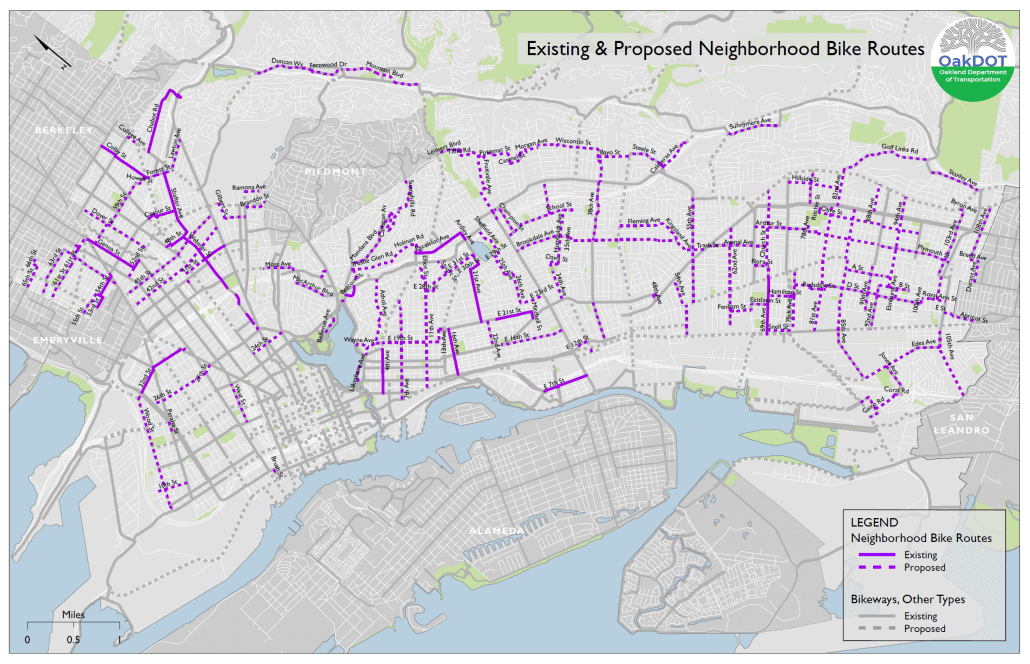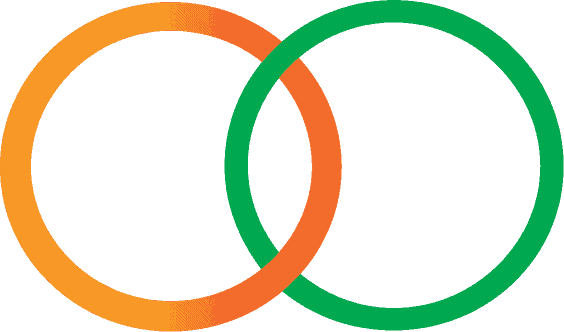Oakland Brings COVID Open Streets to California Streets
Oakland became the first California city to join the growing list of world cities that are designating COVID open streets. Open streets are a smart way to create more public space for walking and biking during the coronavirus pandemic. Oakland designated 74 miles of its existing and proposed neighborhood bikeway network as “closed to through traffic so that people can more comfortably use these low-traffic streets for physically distant walking, wheelchair rolling, jogging, and biking all across the City.” About 10% of Oakland’s roadways will become COVID open streets.
Tactical urban expert Mike Lydon is tracking emergency open streets projects around the world. Oakland is now at the top of the list by a wide margin.
UPDATE: Oakland shoots to the top with 74 miles(!) of #Covid19Streets #OpenStreets to promote #PhysicalDistancing; Denver adds mileage; Portland exits.
1) Oakland: 74 miles
2) Minneapolis: 18.3 miles
3) Denver: 16.1 miles
4) Louisville: 11 miles
5) Vancouver, BC: 10.53 miles— Mike Lydon (@MikeLydon) April 10, 2020
COVID Open Streets
Many Californians are rediscovering the bicycle right now. It is a great way to maintain physical distance while traveling for essential work or getting exercise. The same thing is happening with walking. CalBike and many other organizations are promoting and supporting the trend. CalBike helped to get the state to clarify that bike repair shops are essential California businesses. But the sidewalks and bikeways remain crowded because we have given almost all of our shared space to cars, not people.
Like Open Streets events, COVID open streets demonstrate an alternative way of organizing our communities. “We hope that people will deeply appreciate the safety, the serenity, the civility, of open streets during this special period and demand that those conditions are made permanent after this crisis passes,” said Dave Snyder, Executive Director of the California Bicycle Coalition.
Oakland Sets the Bar High with 74 Miles of “Slow Streets”
In Oakland, local advocates had been in conversation with the city about opening Oakland streets for walking and biking and closing those streets to most car traffic. The organizations pushing for COVID open streets include Bike East Bay, Walk Oakland Bike Oakland (WOBO), Transport Oakland, and Transform. Even so, they were surprised by the speed with which the City of Oakland moved ahead with the plan, according to Bike East Bay Advocacy Director Dave Campbell.
Campbell and representatives of other advocacy groups are still talking with the city about the implementation of the plan. The city’s web page for the program, called Oakland Slow Streets, lists four areas that will be closed to most traffic starting on Saturday, April 11. Local traffic and emergency vehicles are still allowed to enter while the streets are closed to through traffic. Officials plan to use tactical urbanism to implement the changes. This may include strategically parked cars, traffic cones, and lots of signs.
“We applaud the City of Oakland’s actions that will keep residents healthy and safe during the shelter in place order,” Campbell said. “We look forward to partnering with more Oakland communities and neighborhoods to understand how to best create open space for safe physical distancing.”
Campbell spoke with CalBike from one of the open streets on the first morning of implementation. He reported a street filled with roller skaters, dog-walkers, joggers, and lots of kids, all safely physically distanced. “It’s working well on the first day,” he said.
The test will be in the days to come. Campbell hopes there won’t be any police activity on the COVID open streets. He emphasized that it’s important that families still feel free to use the streets in front of their homes. Local residents shouldn’t feel pushed out by people coming from other neighborhoods.

Oakland is using this map of current and planned bike routes as the basis for which streets will become Slow Streets.
Will Other California Cities Join Oakland?
Biking and walking advocates have been pressuring other California cities for open streets during this time. Los Angeles advocates have proposed a huge network of open streets. In San Francisco the SF Bicycle Coalition and others have proposed closing John F. Kennedy Drive in Golden Gate Park to cars to increase space for walking and biking. Officials in both of those cities opposed the measures, citing concerns that they would attract too many people. The Silicon Valley Bicycle Coalition on Friday sent letters to officials in cities throughout their region asking for emergency bikeways and sidewalk widenings.
Emeryville may be the next California city to create open streets during the stay at home order. City Councilmember John Bauters gave CalBike this statement: “As the Emeryville City Council’s Transportation Committee members, Councilmember [Ally] Medina and I have outlined a long term vision that converts public streets into bicycle and pedestrian-only rights of way. We are in discussions with city staff about how to pilot or otherwise implement some of our ideas during COVID-19, including the closure or limitation of some streets to vehicular traffic.” And, with Oakland setting the bar high, some other East Bay cities that had previously refused to create open streets for COVID physical distancing.
We hope that more communities in California will opt for open streets to allow healthy, distanced exercise. And, after the pandemic recedes, we hope that towns and cities will move aggressively to create space for safe biking and walking every day. That’s a step we need to take to mitigate the even bigger looming crisis of climate change.
Bring COVID Open Streets to Your Neighborhood
The pandemic opens up some possibilities at the same time it forecloses others. California’s state and local governments have shown their willingness to make difficult choices to benefit public health. We have all seen how quickly we can adapt to huge changes in our daily lives.
To join the effort to get open streets in your community, support your local advocacy organization or get advice and sign the petition at Salud America!


